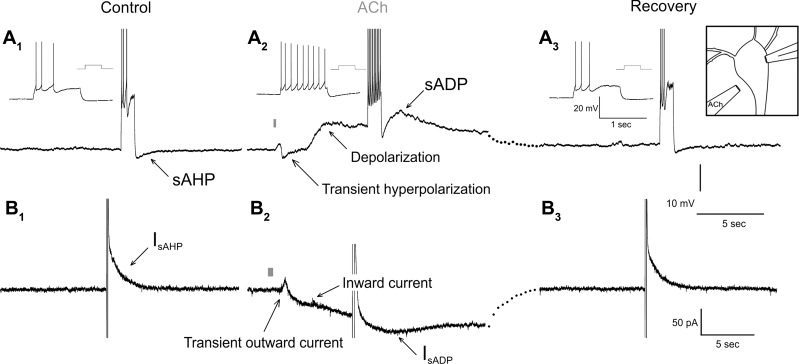Fig. 1.
Electrophysiological effects elicited by Gαq-11 activation in cortical pyramidal neurons. A: response of a pyramidal cell to focal application of ACh (diagrammed in top right inset of A3) recorded in current clamp. A1: under control conditions a brief constant-current depolarizing pulse (150 pA, 1 s) triggers an accommodating burst of spikes that is followed by an afterhyperpolarization that includes a slow component, the sAHP. Inset: expanded view of the spiking response. A2: focal application of ACh from a patch pipette (1 mM, 200 ms, indicated by a gray bar) elicits a transient hyperpolarization that is followed by a more sustained depolarization. The same constant-current depolarizing pulse delivered after ACh application triggers sustained spiking and the replacement of the sAHP by a sADP. A3: recovery from the effect of ACh. B: response of a different neuron to focal application of ACh recorded in voltage clamp. B1: under control conditions, a brief depolarizing step (100 ms to +30 mV from a holding potential of −60 mV) elicits an outward aftercurrent that includes a slow component, the IsAHP. B2: focal application of ACh (1 mM, 500 ms) elicits a transient outward current that is followed by a more sustained inward current. After ACh, the IsAHP is inhibited and is replaced by a IsADP. B3: recovery from ACh. A and B show results obtained from layer V pyramidal neurons of the prelimbic cortex in acute brain slices prepared from rats aged p18 (A) and p21 (B).

